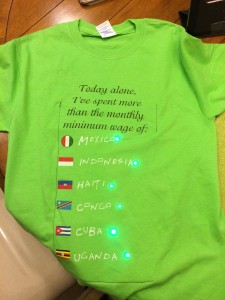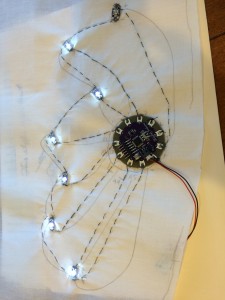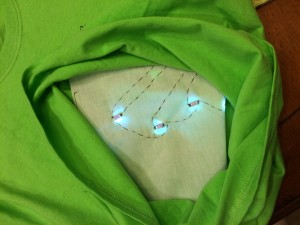By: Thomas Hall
The objective of my project, The Money Shirt, is to draw attention to the extreme disproportion of wealth across the world. Because of geographic and socioeconomic boundaries, it is difficult to conceptualize the vast disparity in spending power in other nations. The Money Shirt is designed to create a wearable, visual aid that does exactly that. Designed and ordered through Uberprints, the front text reads, “Today alone, I’ve spent more than the monthly minimum wage of:” and is followed by 6 countries in order of the average wage of unskilled laborers, bottommost being Uganda, and topmost being Mexico. Indonesia recently voted to raise its minimum wage to $206 dollars a month, besting Mexico’s $126, so the order will have to be viewed as more of a perception of the countries’ worth, instead of concrete order of incomes. Researching the minimum wages was a challenge in itself, as countries like Haiti fluctuate rapidly, and others like Uganda have such massive inflation rates that one US dollar is almost 3,000 Ugandan shillings. Beside each country is an LED connected to an Arduino Lilypad and a button. With each press of the button, the next LED lights up in order from bottom to top. While it would be impractical to manually activate the LEDs every time the wearer actually met the subsequent minimum wage, the existing design is effective at starting conversation about wealth inequality.

After receiving the shirt, I laid out the Arduino Lilypad, button, and LEDs, and drew prospective lines on the interfacing with pencil where the conductive thread would run. My first issue arose when I realized that the interfacing I had bought, which was labeled “non-fusible” was actually very fusible indeed. It was also far too thin not to tear. I bought some thicker material, and it has worked well. Next, I discovered that one of my LEDs was failing to light. I switched LEDs, and still had the same problem. After venting on Twitter and testing two separate “pedals” on the Arduino, I looked closer at my code and discovered that while doing preliminary testing, I had deleted the 6th LEDs “int” setup indicator. Replacing this line of code fixed the issue immediately, and I was able to light all LEDs using alligator clips.

The code functions to turn each LED on in sequence, using each numbered press up to 6, then turns them all off on the 7th press. I used the lithium-ion battery included in the Lilypad kit. It provides plenty of power for the 6 LEDs. After successfully testing the LEDs, I hand-sewed them through the interfacing using conductive thread. The Arduino and LEDs are sandwiched between the interfacing and the shirt, so that they do not come in contact with skin. Contact had the possibility of causing a short. When using a sewing machine to stitch the interfacing to the shirt, I made sure to leave a section of the interfacing free so that I may reach in and turn the Arduino on and off, as well as swap out the battery. Overall, the hand-stitching was time consuming, and the conductive thread was prone to tangles and breaks, but I found it effective when secured evenly and tightly to the nodes of the LEDs and Arduino. My previous project had the issue of crossed threads, due to the confined spaces, but my drawn paths ensured that each connection led away from any others.

Of all the pieces that we studied this semester, Sindelokë’s blog post, “Of Dogs and Lizards: A Parable of Privilege,” was one of the most relevant to my project. The post states that “Having privilege isn’t something you can usually change, but that’s okay, because it’s not something you should be ashamed of, or feel bad about” (Sindelokë). The Money Shirt isn’t meant to shame the wearer or those around her or him, but instead to bring as much attention as possible to the hardships and differences of groups that we may not typically consider. There is already something ironic about having a shirt custom designed and printed, ordering electronics, and using sewing machinery and a laptop to make a product based on exposing monetary privilege. This irony was not lost on me, but in a way it serves to further accentuate the mission statement of the Money Shirt. The piece “Sweatshops and Cynicism” acknowledges that “clothes can express one’s position of social power, and that ability is one driver behind the desire for new trends” (Pierlott). This drive can be seen in the evolution of athletic wear from performance-based garments to everyday attire, often with predominant logos indicating high price tags. The Money Shirt can hopefully symbolize a similar drive centered around mindfulness of financial independence.
Another article that we reviewed in class, “SXSW Where High-Tech Meets High-Fashion,” asserts that for wearables to succeed, they have to be as much about fashion as about functionality. The driving quote that made me create an aesthetically pleasing shirt states, “if we are going to be making these wearable devices and gadgets and we’re asking people to wear them, they need to look good” (Silverman). While the project is about bringing monetary privilege to light, it is also an experiment in wearable technology, and therefore should, in my opinion, push the boundaries of subtlety while still incorporating technological aspects.
Below is monetary information, as well as sources:
Uganda
Less Than $1 (http://goo.gl/3RwRfj)
Cuba
$8.49 (http://goo.gl/dMneB9)
DR Congo
$65 (http://goo.gl/KBf4Om)
Indonesia
$206 (Last year saw minimum wage gains of 44 percent in Jakarta, leading employers to cut 200,000 jobs) (http://goo.gl/tezsv1)
Haiti
$90 (http://goo.gl/K0QrCP)
Mexico
$126 (After a 2015 increase of 23%) (http://goo.gl/tqc6BL)
- Silverman, Lauren. “SXSW Where High-Tech Meets High-Fashion.” Art + Seek. March 13, 2013. http://goo.gl/q4qsPe
- Sindelókë. “Of Dogs and Lizards: A Parable of Privilege.” January 13, 2010. http://goo.gl/uV7TMn
- Pierlott, Matthew F. “Sweatshops and Cynicism.” Fashion – Philosophy for Everyone: Thinking with Style. Ch. 11. 1st ed. Blackwell Publishing Ltd. 2011. http://goo.gl/uvXwBr

Leave a Reply
You must be logged in to post a comment.